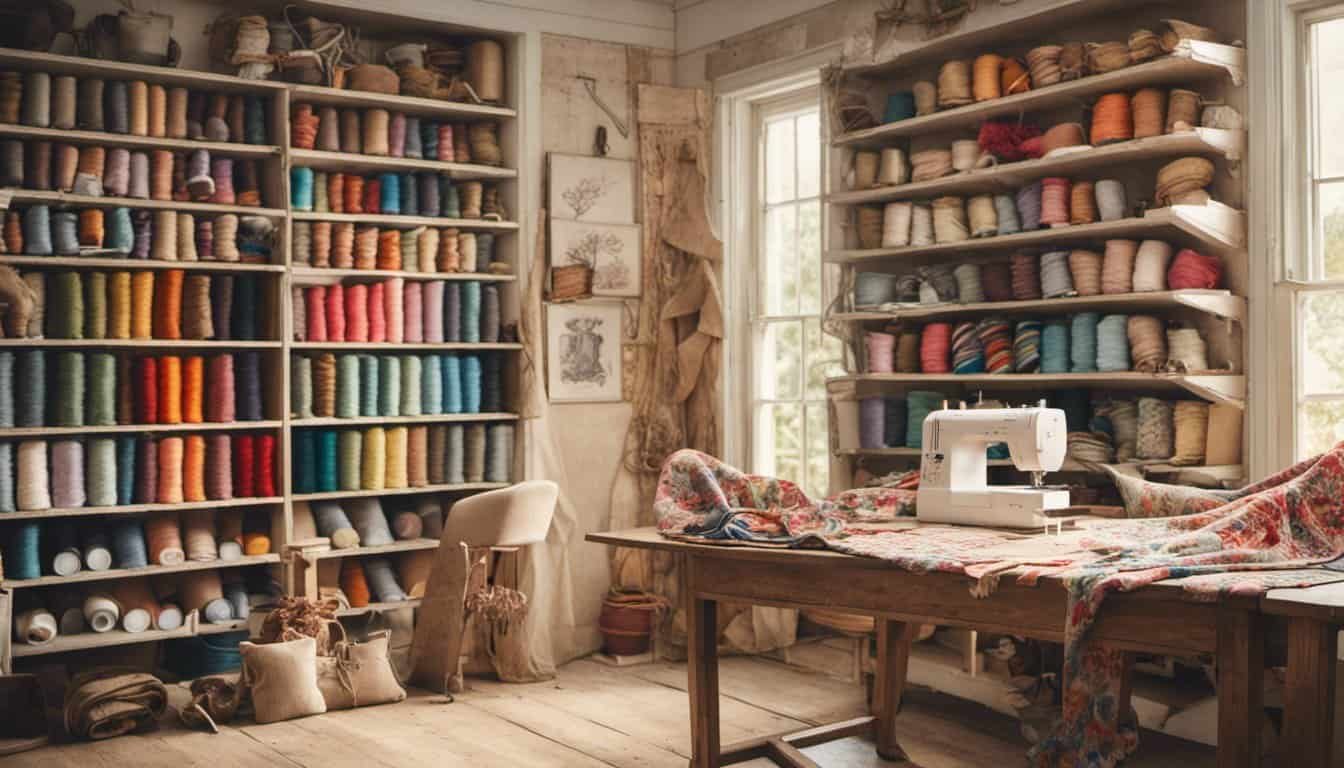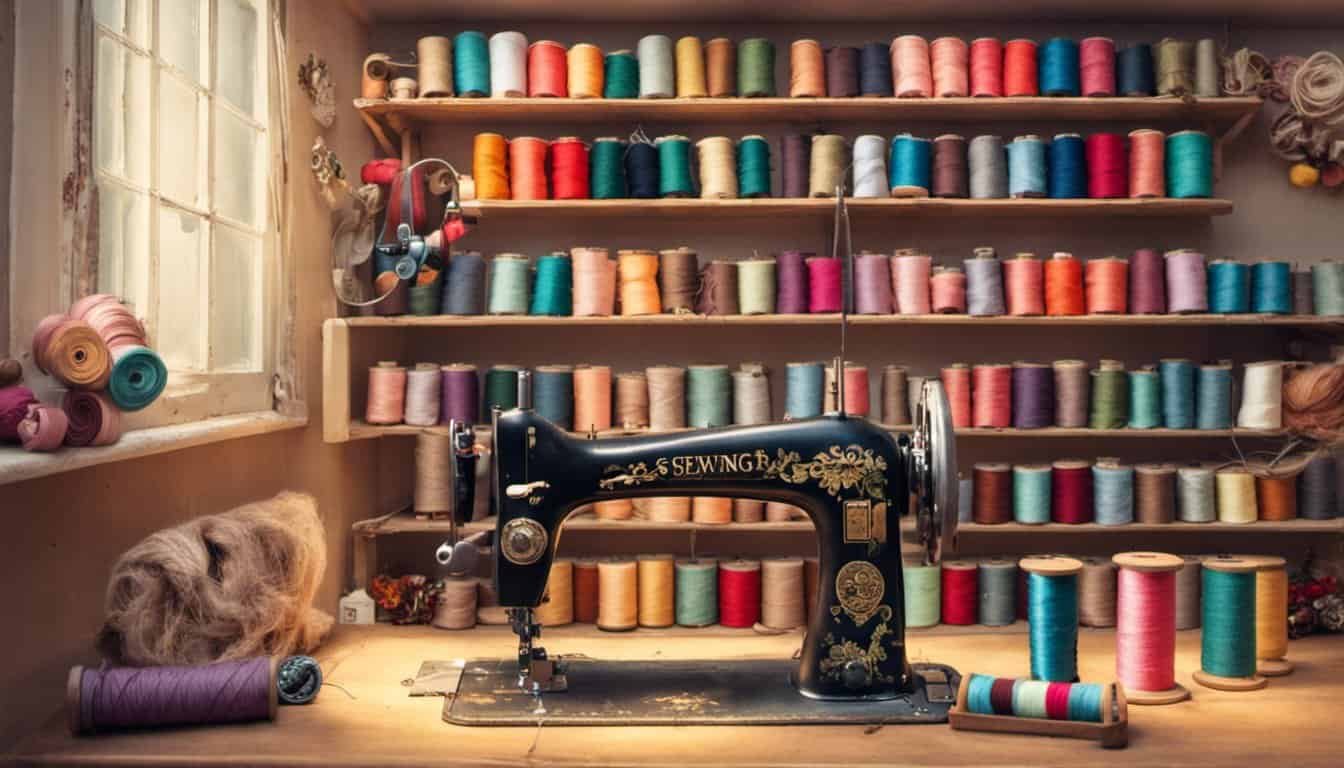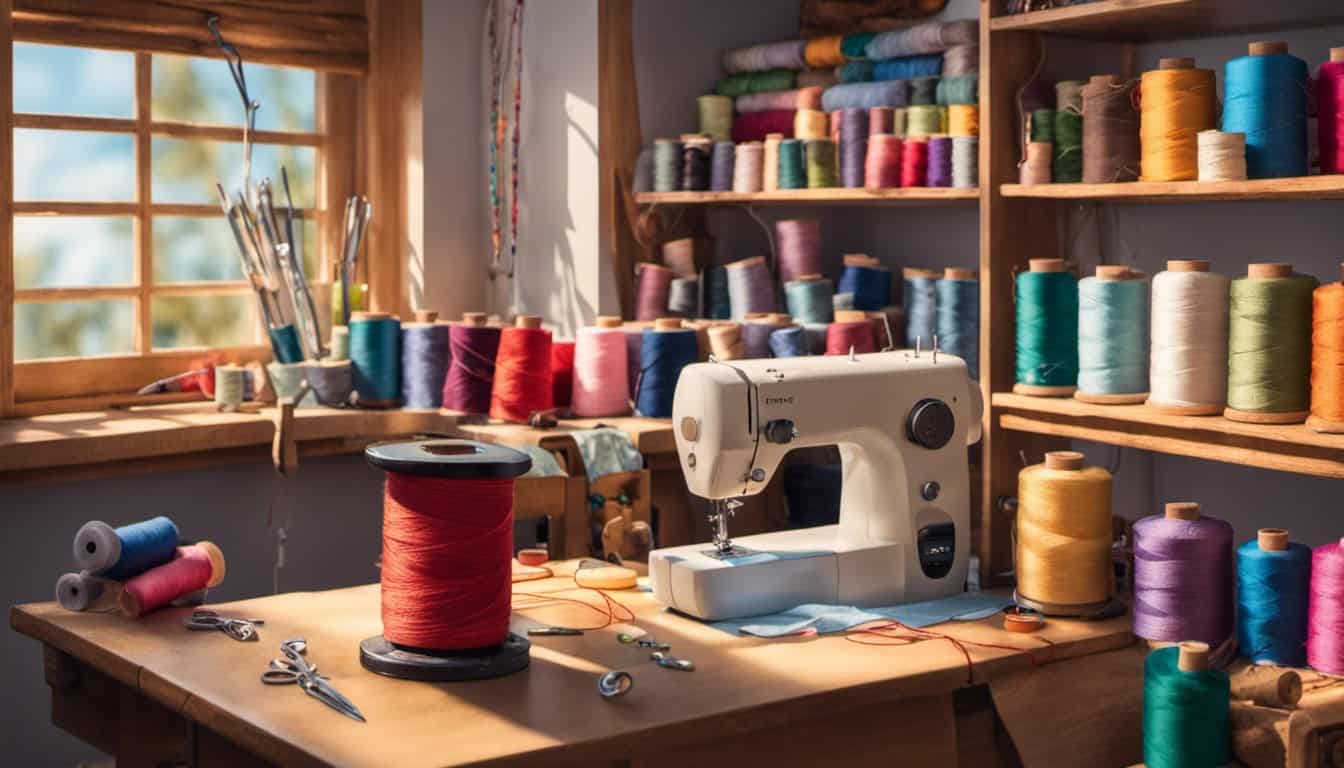Ever thought about sewing with silk? It might seem daunting at first, but with the right tips, you can create stunning projects. Silk’s luxurious texture and natural sheen make it a favorite for elegant garments and delicate accessories.
You don’t need to be a pro to start working with this beautiful fabric. Understanding silk’s unique properties and having the right tools can make your sewing experience smooth and enjoyable. From selecting the best silk to mastering essential techniques, you’ll find sewing with silk both rewarding and fun.
With a bit of practice and patience, you can transform silk into timeless pieces that showcase your creativity and skill. Let’s explore some friendly tips to help you get started on your silk sewing journey.
Why Choose Silk for Sewing
Choosing silk for your sewing projects offers numerous advantages that set it apart from other fabrics. Its unique properties make it ideal for creating elegant and high-quality garments and accessories.
Luxurious Texture and Appearance
Silk boasts a smooth, lustrous surface that adds a touch of sophistication to any piece. The natural sheen enhances colors and patterns, making your creations stand out.
Elegant Draping
Silk drapes beautifully, allowing garments to flow gracefully with movement. This characteristic is perfect for designing dresses, scarves, and blouses that require a fluid silhouette.
Breathable and Comfortable
Silk is a natural fiber that breathes well, keeping you cool in warm weather and warm in cooler temperatures. This makes silk clothing versatile for various climates and seasons.
Hypoallergenic Properties
Silk is gentle on the skin and less likely to cause allergic reactions. It’s an excellent choice for individuals with sensitive skin or allergies to synthetic fibers.
Durable Despite Delicacy
While silk appears delicate, it’s surprisingly strong and durable when properly cared for. With the right techniques, silk garments can last for years without losing their quality.
Versatility in Projects
Silk is suitable for a wide range of sewing projects, including apparel, accessories, home décor, and special occasion items. Its flexibility allows you to experiment with different styles and designs.
Natural and Sustainable
As a natural fiber, silk is biodegradable and environmentally friendly. Choosing silk supports sustainable fashion and reduces reliance on synthetic materials.
Understanding Silk Fabric
Grasping silk’s unique characteristics enhances your sewing projects. Here’s a closer look at the different types and key properties of silk.
Types of Silk
- Charmeuse
Lightweight with a shiny front and matte back, ideal for blouses and evening gowns.
- Chiffon
Sheer and lightweight, perfect for scarves and delicate overlays.

- Dupioni
Stiff with a slight sheen and natural slubs, suitable for dresses and suits.
- Taffeta
Crisp and smooth, excellent for skirts and structured garments.
- Organza
Transparent and firm, used for evening wear and bridal accessories.
Properties of Silk
- Lustrous Surface
Reflects light, enhancing colors and adding sophistication to your designs.
- Draping Ability
Flows gracefully, creating elegant silhouettes in garments like dresses and blouses.
- Breathability
« Discover What Is Polyester Fabric and Its Best Uses – You Won’t Believe 5
Transform Your Home & Style: The Ultimate DIY Guide to Working with Suede »
Keeps you comfortable in various climates by allowing air circulation.
- Hypoallergenic
Gentle on sensitive skin, making it suitable for clothing and bedding.
- Durability
Lasts long when properly cared for, resisting wear and tear in high-quality projects.
- Biodegradable
Environmentally friendly, supporting sustainable fashion practices.
Preparing Silk for Sewing
Getting your silk ready is essential for a smooth sewing experience. Proper preparation ensures your projects turn out beautifully.

Selecting the Right Tools
Choose tools designed for delicate fabrics:
- Sharp scissors: Cut clean edges without fraying.
- Fine needles: Use size 60/8 or 70/10 for precise stitching.
- Proper thread: Opt for polyester or silk thread to match silk’s sheen.
- Stabilizers: Apply tissue paper or French curves to support intricate designs.
Preparing Your Silk Fabric
- Pre-wash fabric: Follow care instructions to prevent shrinkage.
- Iron with low heat: Use a pressing cloth to avoid scorching.
- Cut precisely: Lay fabric flat and use pins sparingly to prevent marks.
- Mark patterns carefully: Use water-soluble pens or tailor’s chalk for easy removal.
Sewing Techniques for Silk
Mastering the right sewing techniques ensures your silk projects turn out beautifully. Choose methods that complement silk’s delicate nature.
Hand Sewing vs. Machine Sewing
Hand sewing offers precision for intricate details and delicate adjustments. Use it when working on fine edges, hems, or appliqués. Machine sewing provides speed and consistency, ideal for longer seams and larger projects. Select a machine with a straight stitch and adjustable tension to handle silk smoothly. Combining both techniques maximizes control and efficiency in your sewing process.
Best Stitch Types for Silk
Choose stitch types that enhance silk’s elegance and durability:
- Straight Stitch: Ideal for seams and topstitching, offering a clean finish.
- Twig Tack or French Knot: Perfect for decorative elements like embroidery.
- Zigzag Stitch: Provides flexibility and prevents fabric fraying on stretch areas.
- Blind Hem Stitch: Creates invisible hems, maintaining silk’s seamless appearance.
- Overlock Stitch: Secures raw edges, enhancing durability without bulk.
Using these stitches ensures your silk garments and accessories maintain their luxurious look and feel.

Finishing and Caring for Silk Projects
Proper finishing enhances your silk project’s appearance and durability. Follow these steps to ensure a polished result.
Hemming Silk
Hemming silk requires precision to maintain its delicate nature.
- Fold and Press: Fold the hem to the desired length and press with a low-heat iron using a pressing cloth.
- Choose the Right Stitch: Use a blind hem stitch for an invisible finish or a straight stitch for a visible, clean line.
- Secure the Hem: Sew slowly, maintaining even stitches to prevent puckering.
Pressing Silk
Pressing silk correctly preserves its smooth texture and drape.
- Use Low Heat: Set your iron to the silk setting or the lowest temperature.
- Employ a Pressing Cloth: Always press through a pressing cloth to protect the fabric from direct heat.
- Gentle Pressure: Apply light pressure to avoid crushing the fabric’s natural sheen.
Applying Finishing Touches
Add final details to complete your silk project.
- Trim Threads: Remove all loose threads to prevent snagging.
- Secure Edges: Use clear fabric glue or a small amount of starch to reinforce raw edges if necessary.
- Add Embellishments: Attach buttons, beads, or appliqués carefully, ensuring they complement the silk’s elegance.
Caring for Silk Projects
Maintaining your silk creations ensures their longevity and beauty.

Washing Silk
Handle silk with care during cleaning.
- Hand Wash Preferred: Gently hand wash in cold water using a mild detergent.
- Avoid Soaking: Limit washing time to prevent fabric weakening.
- Rinse Thoroughly: Ensure all detergent is removed to avoid residue buildup.
Drying Silk
Dry silk properly to maintain its shape and texture.
- Air Dry Flat: Lay the garment flat on a clean towel away from direct sunlight.
- Avoid Wringing: Gently press out excess water without twisting the fabric.
- Use a Drying Rack: For larger items, a drying rack helps retain the shape.
Ironing Silk
Iron silk carefully to prevent damage.
- Steam Ironing: Use a steam iron on a low setting for best results.
- Iron Inside Out: Protect the fabric by ironing on the reverse side.
- Press, Don’t Slide: Lift and press the iron instead of sliding it to avoid stretching.
Storing Silk
Store silk items to keep them in pristine condition.
- Use Breathable Containers: Store in cotton bags or garment boxes to allow airflow.
- Avoid Plastic: Prevent moisture buildup and mildew by avoiding plastic containers.
- Keep Away from Sunlight: Protect silk from fading by storing in a cool, dark place.
Preventing Common Issues
Address potential problems promptly to maintain your silk projects.

- Pilling: Gently remove pills with a fabric shaver or fine sandpaper.
- Stains: Treat stains immediately with a silk-safe stain remover, following the product instructions.
- Color Fading: Minimize exposure to sunlight and use UV-protective sprays if necessary.
By following these finishing and care tips, your silk projects will remain stunning and durable for years to come.
Common Mistakes to Avoid
Using the Wrong Thread
Selecting an unsuitable thread compromises silk’s delicate structure. Opt for high-quality, fine polyester or all-natural threads to ensure strength without bulk.
Incorrect Needle Choice
Using heavy needles damages silk’s fibers. Choose sharp, fine needles like silk or microtex to create clean, precise stitches.
Skipping Fabric Preparation
Neglecting to pre-wash silk leads to shrinkage or color changes. Always pre-wash with gentle detergent and dry according to care instructions to maintain fabric integrity.
Improper Cutting Techniques
Cutting silk without sharp scissors causes frayed edges. Use fabric scissors and cut on a stable surface to ensure accurate, clean cuts.

Ignoring Fabric Grain
Disregarding silk’s grain affects garment drape and fit. Align patterns with the fabric’s grain to achieve the desired flow and structure.
Overusing Machine Tension
Excessive tension distorts silk seams. Adjust machine tension to a lower setting, allowing stitches to lie flat and maintain silk’s smooth appearance.
Choosing Inappropriate Stitch Types
Selecting unsuitable stitches disrupts silk’s elegance. Use straight, zigzag, or blind hem stitches to preserve silk’s natural grace and flexibility.
Neglecting Seam Finishing
Skipping seam finishes weakens seams and frays edges. Apply French seams or serged edges to reinforce seams and enhance garment longevity.
Overhandling Fabric
Excessive manipulation damages silk fibers. Handle silk gently during sewing and pressing to retain its lustrous texture and prevent stretching.

Inadequate Pressing Techniques
Using high heat burns silk. Press silk with a low-heat iron and a pressing cloth to remove wrinkles without harming the fabric.
Not Testing on Scraps
Failing to test techniques leads to unexpected issues. Always experiment on silk scraps to adjust settings and ensure successful sewing.
Ignoring Care Instructions
Overlooking proper care shortens silk’s lifespan. Follow specific washing, drying, and storing guidelines to keep your silk creations beautiful.
Using Inappropriate Accessories
Applying heavy embellishments strains silk fabrics. Choose lightweight decorations to complement silk without adding unnecessary weight.
Avoiding these common mistakes ensures your silk sewing projects turn out elegant and durable. By paying attention to thread selection, needle choice, fabric handling, and proper finishing techniques, you enhance both the appearance and longevity of your silk creations.

Conclusion
Creating with silk can be a rewarding experience that adds a touch of luxury to your wardrobe. With the tips you’ve learned you’ll find sewing this delicate fabric easier than you thought.
Keep experimenting and don’t be afraid to try new techniques. Your elegant silk creations will showcase your talent and bring joy to your sewing journey.

















